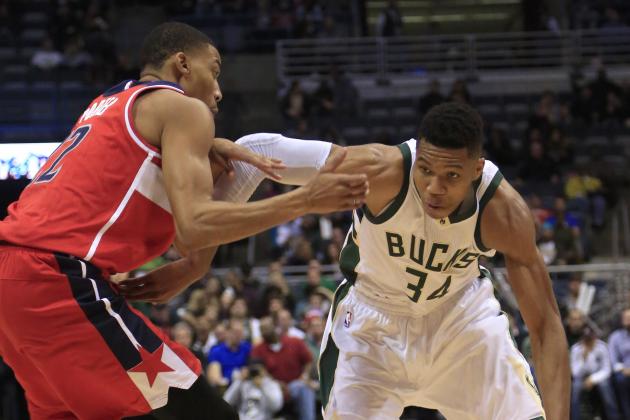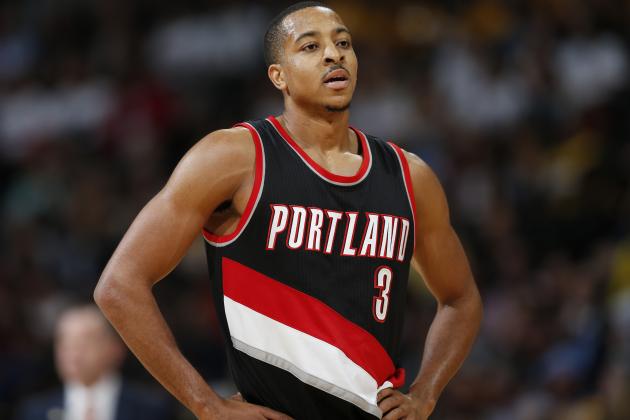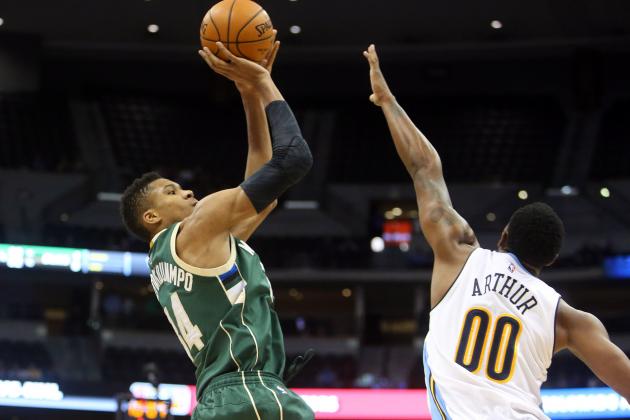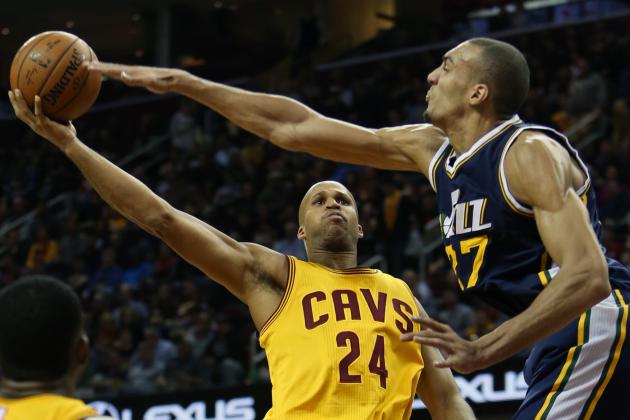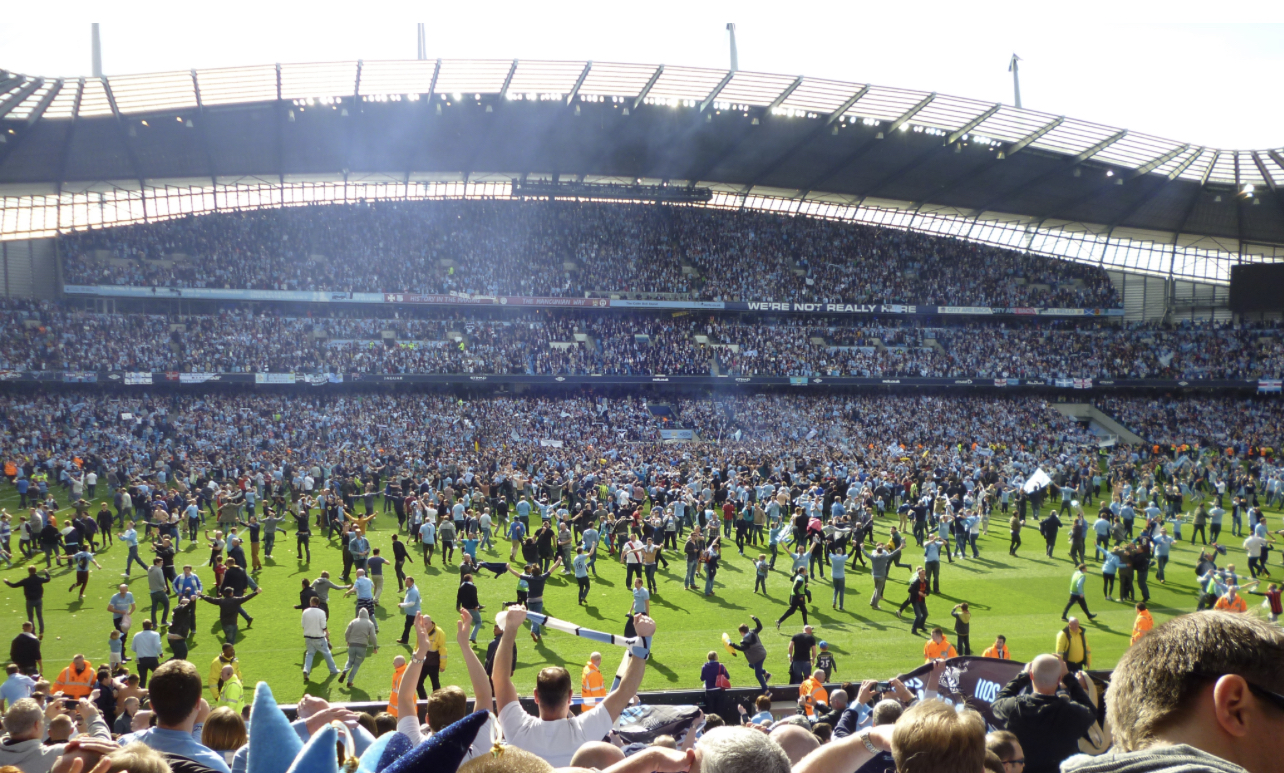Don’t listen to Littlefinger. The Climb isn’t all there is. In theNBA, the Leap comes next.
After scaling the Rookie Wall. After surviving the Sophomore Slump.
In the careers of so many of the league’s greats, Year 3 was the key.
It was the year Michael Jordan and Kevin Durant first led the league in scoring. The year Russell Westbrook starting putting up points like a superstar sidekick in Oklahoma City. The year Kobe Bryant became a full-time starter for the Los Angeles Lakers. The year LeBron James made his playoff debut. The year Anthony Davis graduated from “The Future of the NBA” to “The Brow of the Here and Now.”
A poor draft in 2013 has left the Association short on candidates with the talent and the platforms to spring to that all-important next level. Anthony Bennett, the No. 1 pick that year, is onto his third team in as many seasons. Alex Len and Ben McLemore—the Nos. 5 and 7 picks, respectively—have seen their starting spots usurped by more experienced teammates. Nerlens Noel, No. 6 from that crop, is technically in his second go-round, after missing what would’ve been his inaugural campaign while recovering from knee surgery.
For juniors in today’s NBA, there’s plenty of pressure to perform. Come next July, they’ll be on the clock for rookie-scale extensions, with restricted free agency awaiting those who can’t come to terms on a new deal by the end of October 2016.
For these six, making the leap from promising prospect to bona fide NBA stud carries with it the added burden of helping their respective squads do the same in the standings.
Victor Oladipo, SG, Orlando Magic
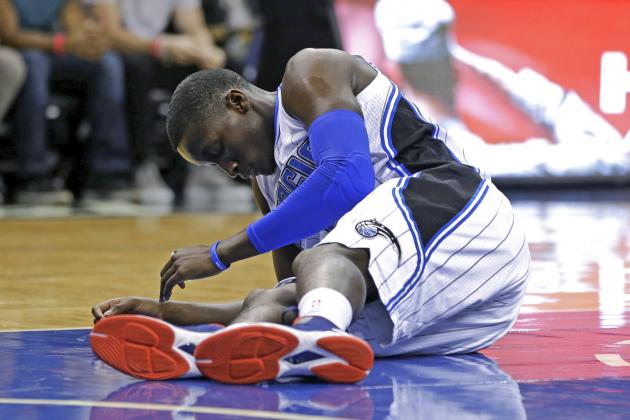
There was a lot for the Orlando Magic to like about Victor Oladipo when the Maryland native left the Indiana Hoosiers for the NBA in 2013. He was a feisty ballhawk on the perimeter, enough so to earn Defensive Player of the Year honors from both the Big 10 and the National Association of Basketball Coaches (shared with Utah Jazz center and former Kansas Jayhawk Jeff Withey), who balanced out his stifling ability with a burgeoning offensive game.
But what made Oladipo a worthy choice at No. 2, even in a weak draft, was the eye-popping trajectory of his skill and the drive behind his year-over-year jumps.
“We felt that [the improved production] really speaks to his work ethic and his ambition and his drive in the summer to make himself into a player,” Magic general manager Rob Hennigan explained after the 2013 draft (via SB Nation’s Evan Dunlap). “We like the fact that those spikes occurred because we felt it was indicative of a relentless ambition to get better.”
That ambition carried into the NBA, where Oladipo made first team All-Rookie in 2013-14 before upping the ante—to 17.9 points, 4.2 rebounds, 4.1 assists and 1.7 steals—in Year 2.
This season, the Magic have (finally) started to show some signs of life, four-and-a-half years after Dwight Howard last dribbled a basketball in Orlando.
And not necessarily because of Oladipo. Aside from the triple-double he posted in a double-overtime loss to the Oklahoma City Thunder—and the clutch threes he hit at the end of regulation and the first overtime period—the 23-year-old swingman seems to have taken a step back this season. According to ESPN, Oladipo’s field-goal percentage (.382) ranks 113th out of 125 players qualified for the league lead in that category. Among three-point shooters, his mark (.279) is 89th…out of 100.
It may be a few games before he has a chance to sharpen those percentages. Oladipo suffered a concussion on Wednesday after taking an elbow to the head from Lakers forward Metta World Peace, and according to the Orlando Sentinel‘s Josh Robbins, there’s no timetable for his return.
What is clear is that the Magic, for all their up-and-coming talent, won’t sneak into the playoffs without a healthy and efficient Oladipo sharing the backcourt with Elfrid Payton Jr.
Otto Porter Jr., SF, Washington Wizards
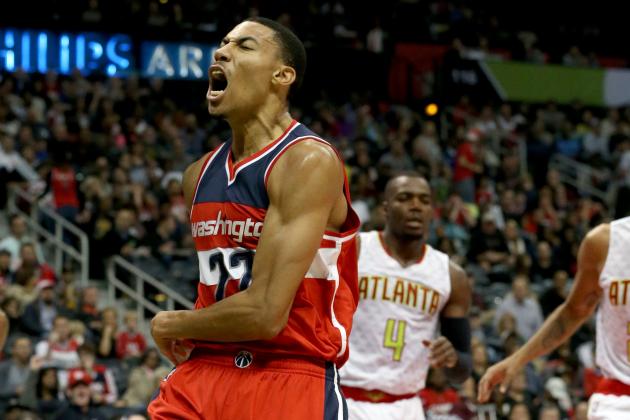
In the time it takes a baby to grow its first tooth, Otto Porter Jr. has gone from a flat-footed punchline to a key contributor for the Washington Wizards.
There was at least one critical step between that infamous blunder and the Porter of today, who has scored 13.4 points on 53.7 percent shooting through his first seven games in D.C. this season. The No. 3 pick in the 2013 draft first showed signs that maybe—just maybe—he wouldn’t be another bust during Washington’s run to the second round of the 2015 playoffs. During his 10 postseason appearances, he averaged 10 points and eight rebounds while knocking down a respectable 37.5 percent of his threes in 33.1 minutes off the bench for the Wizards.
Long-time Wizards fan (and ex-Grantlander) Andrew Sharp was more than pleasantly surprised, especially after watching Porter sleepwalk his way through the regular season as Paul Pierce‘s understudy:
Now that Pierce is in L.A., Porter’s been free to spread his wings in a starting role. With Bradley Beal bothered by a sore shoulder, the Wizards may need Porter to soar if they’re to snap out of their early funk and fight their way into the Eastern Conference’s elite.
